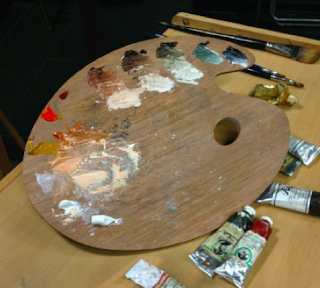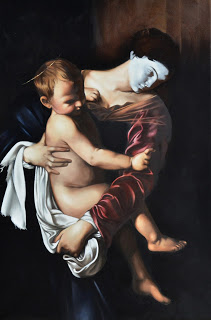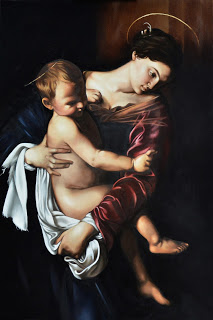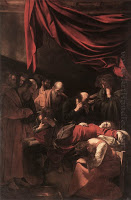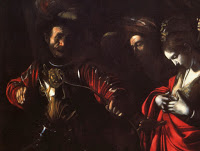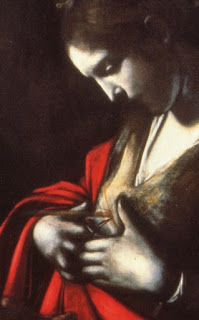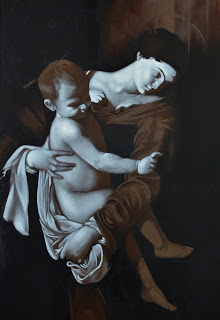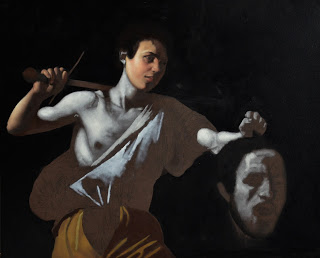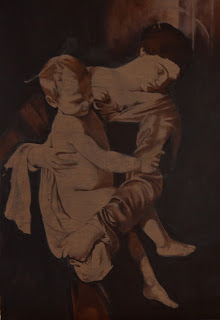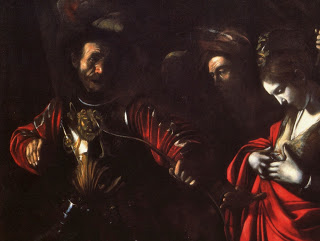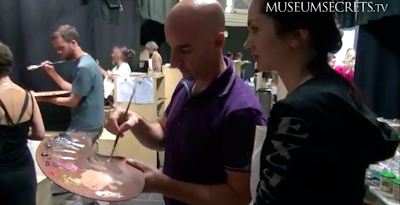The Method of Caravaggio – Part 3 – The Overpainting
and yellow ocher, lead-tin yellow, vermilion (cinnbar),
malachite, carbon black and earth colors, plus madder
lake and copper resinate glazes.
The Method of Caravaggio – Step Two – Underpainting the Lights
Continuing on from the last blog entry, once the wash drawing has dried, the lights are rendered using a white. Caravaggio would have used a lead white but titanium works as well. If using titanium, add in a little bit of calcium carbonate to give the paint some body, opacity and to help it dry a little faster. Where the flesh is lightest, the paint is applied thickly. As the flesh darkens the paint is pulled thinner, resulting in the illusion of the three dimensional form.
The Method of Caravaggio – Step One
Studying Art in Florence
Museum Secrets from the History Channel visited the Angel Academy of Art last summer and filmed part of my workshop there for an episode on studying art in Florence. The episode airs April 4th in Canada. The trailer is here : http://www.youtube.com/watch?v=qu50jhJ-17s&feature=youtu.be
Their blog is here: http://blog.museumsecrets.tv/2013/03/season-3-premiere/


